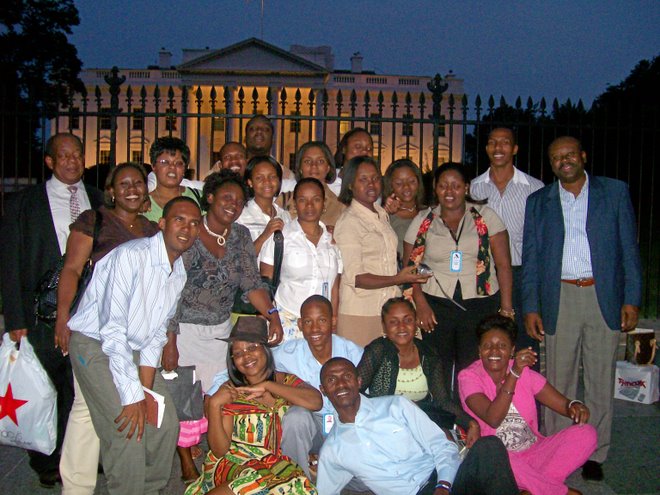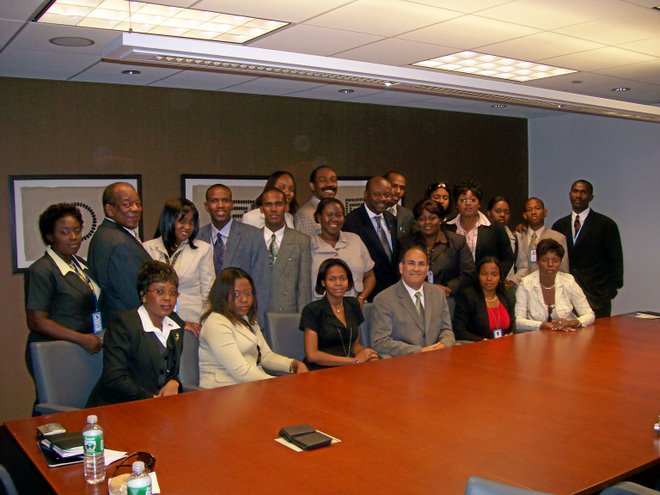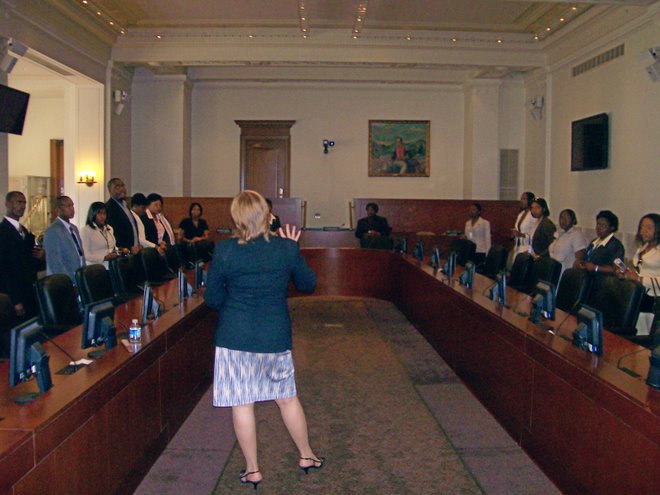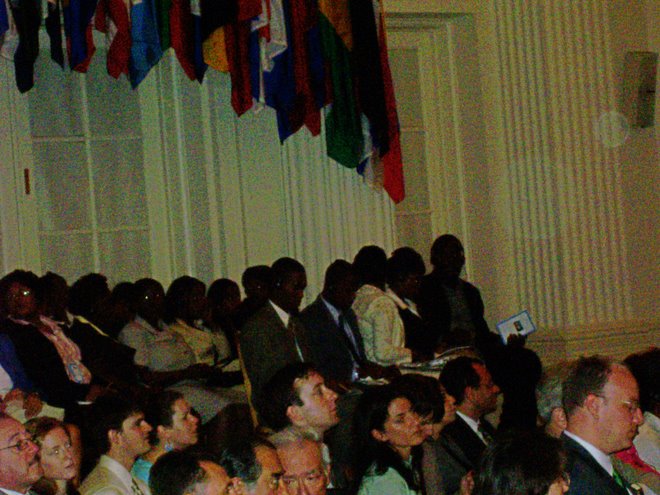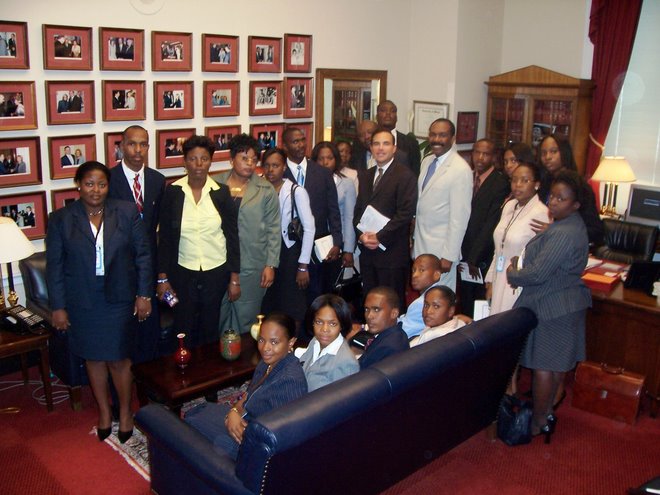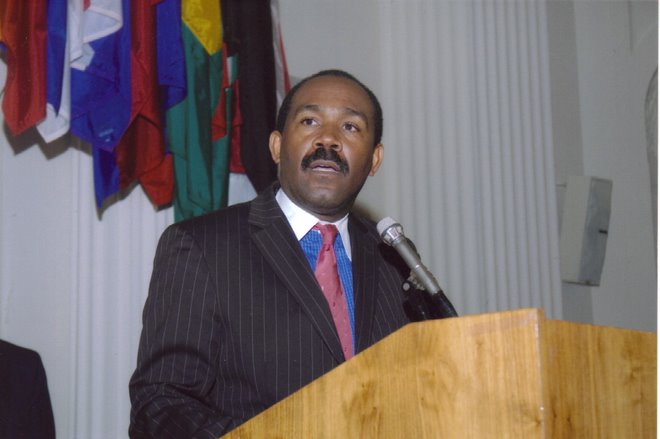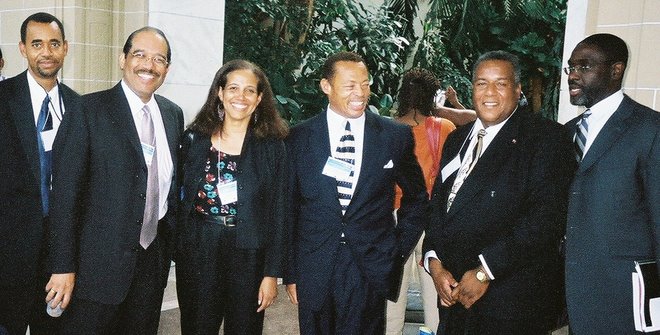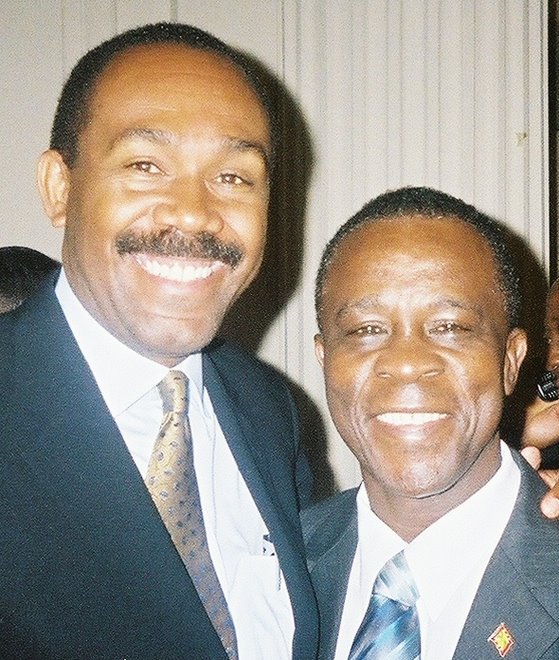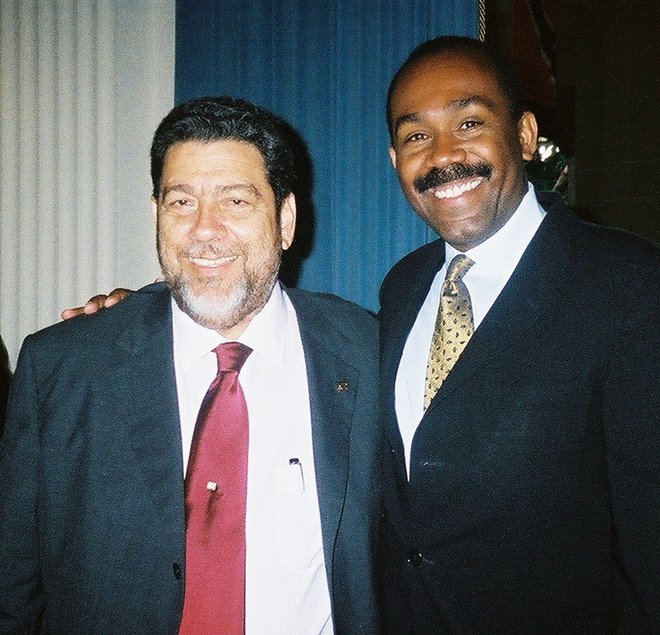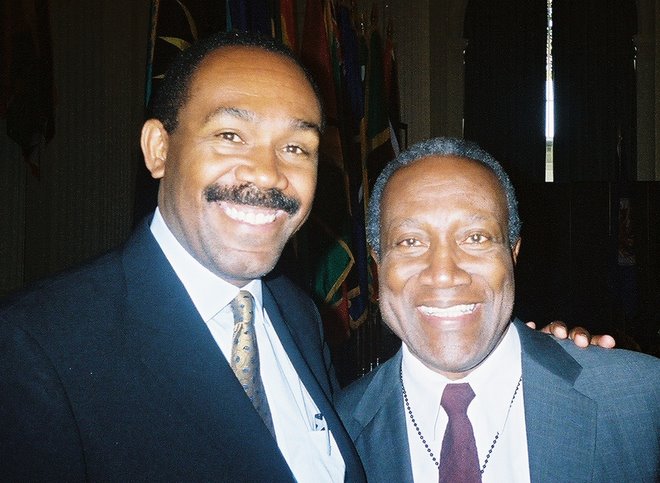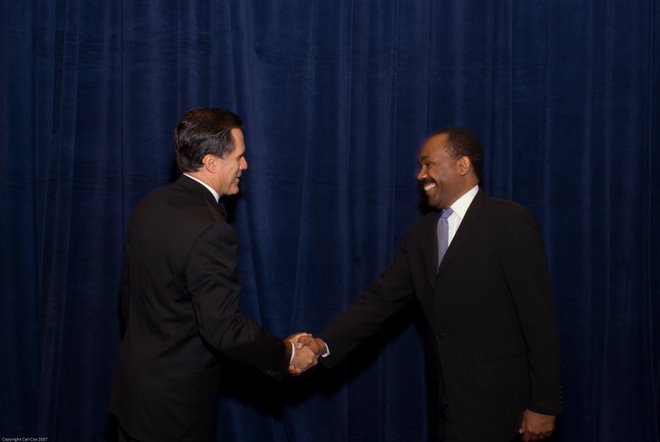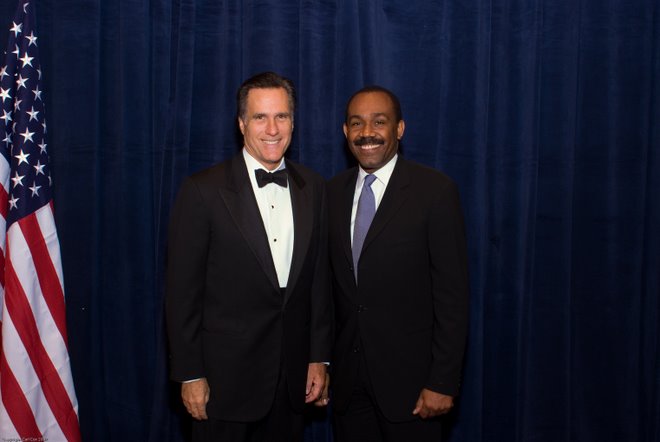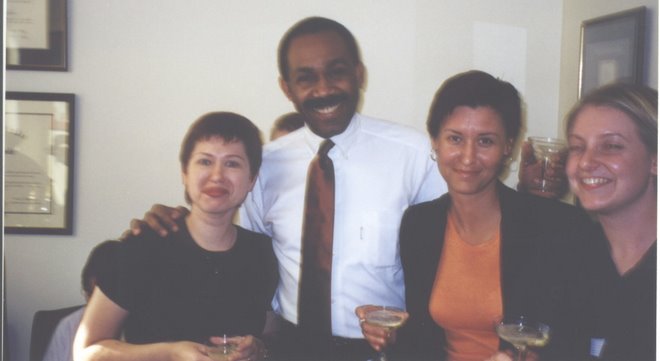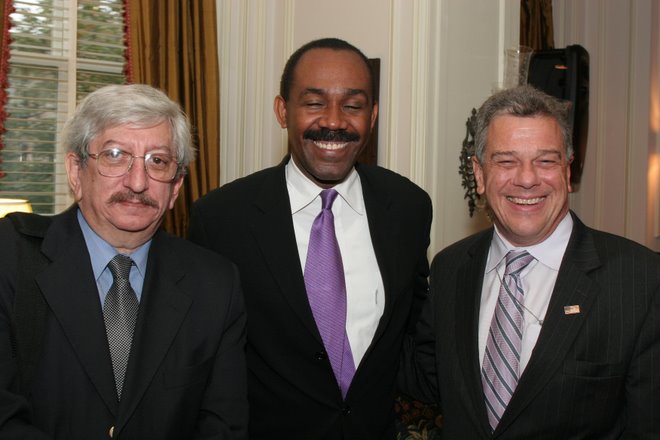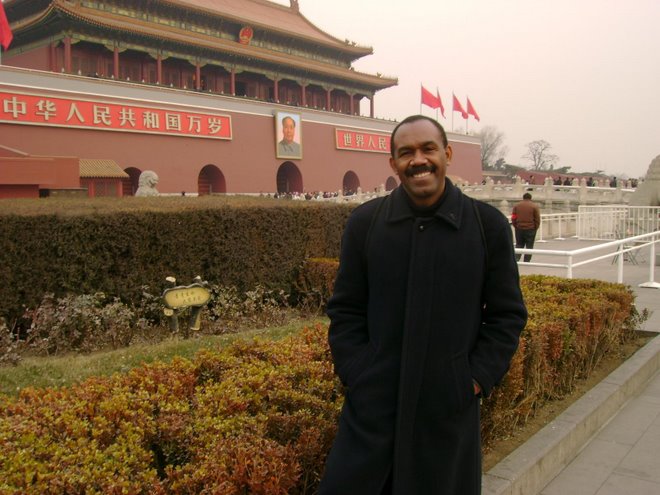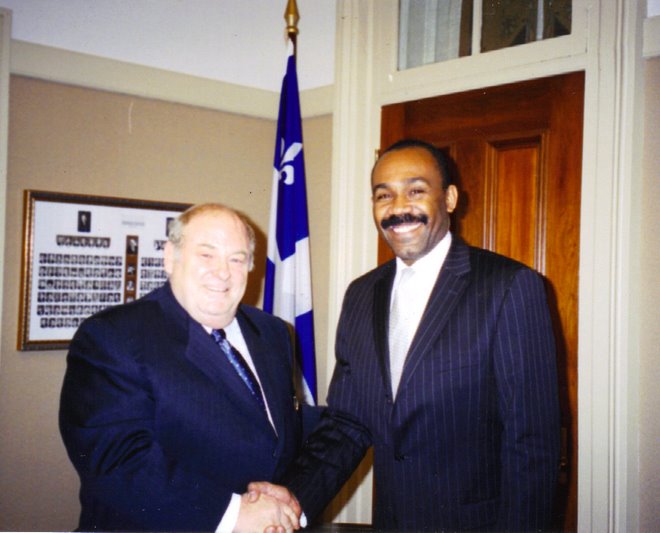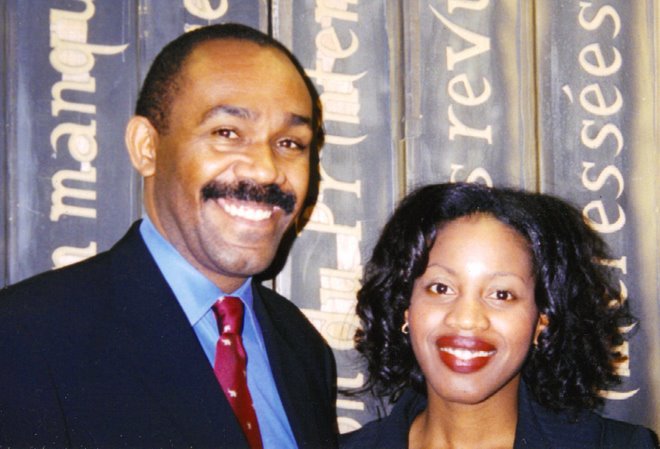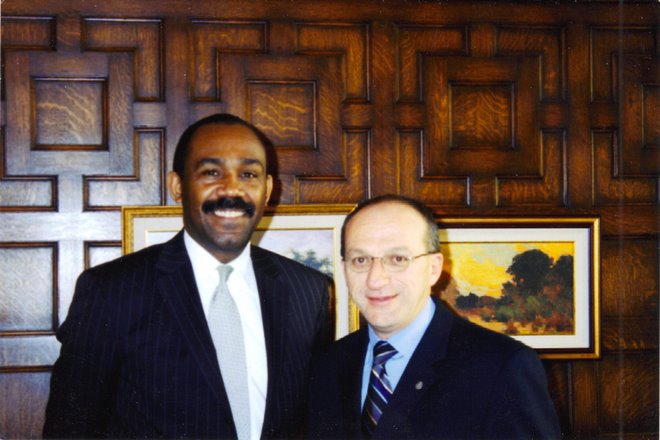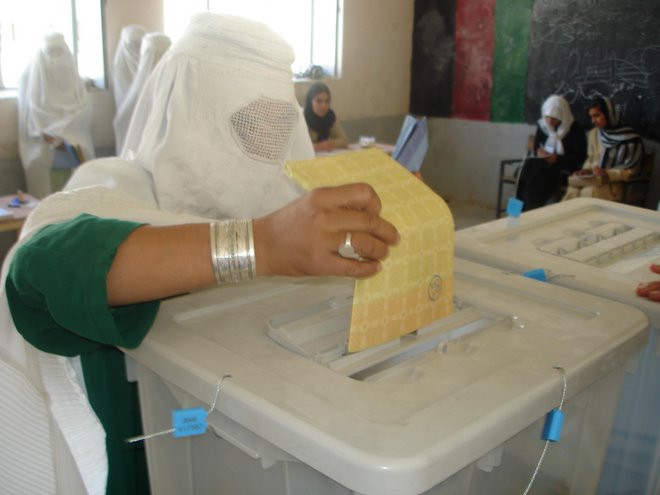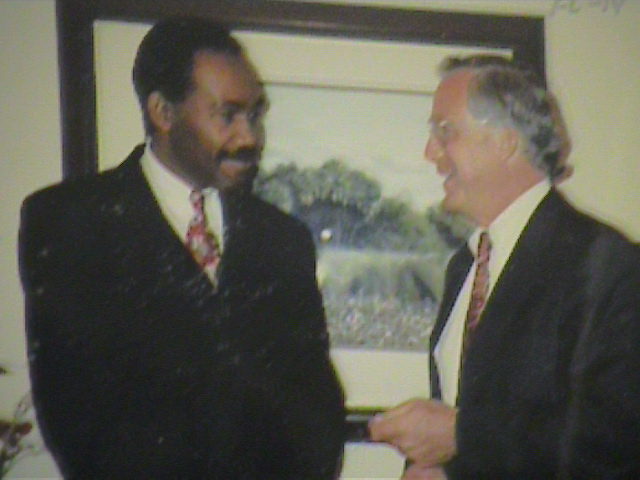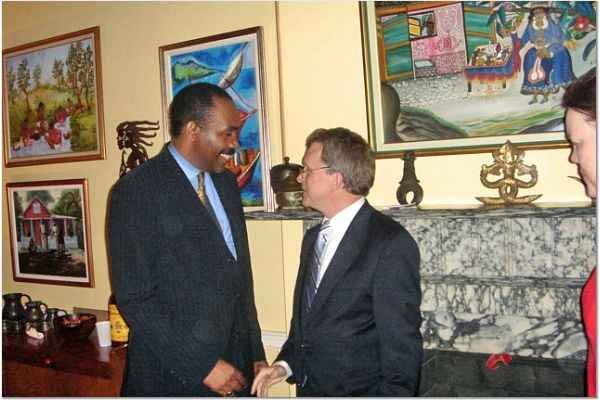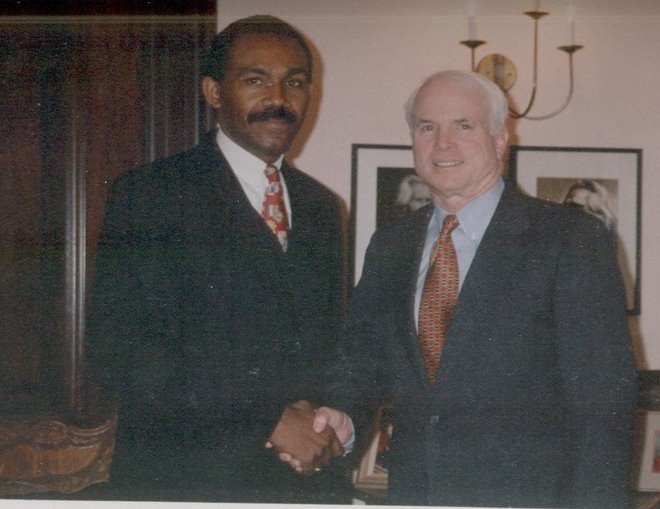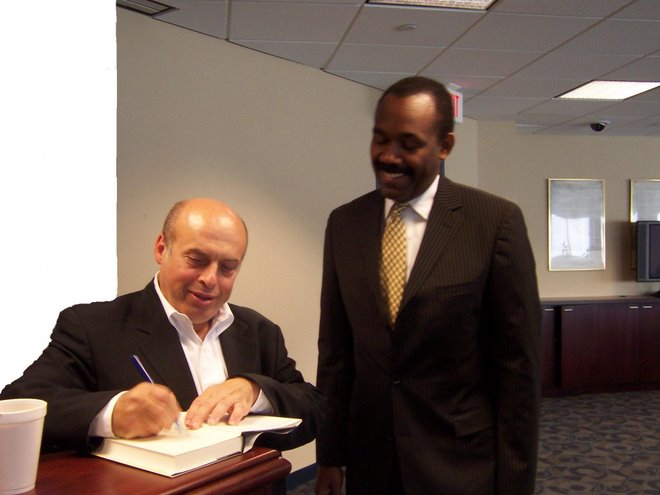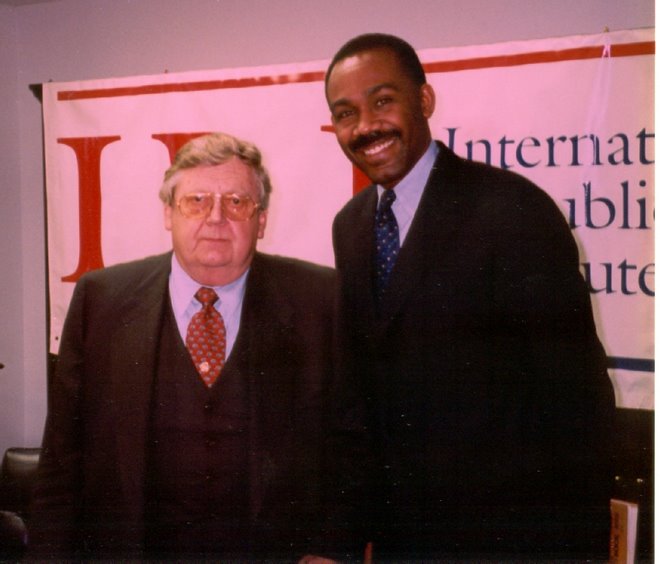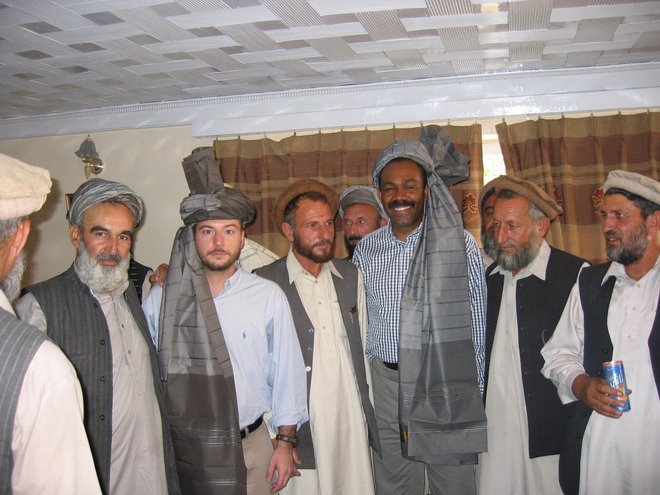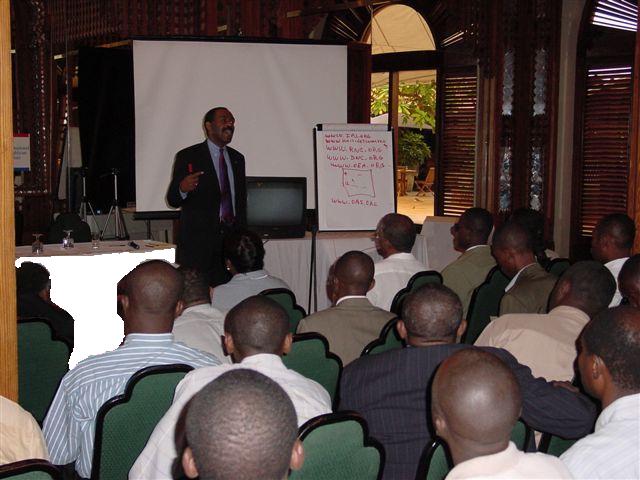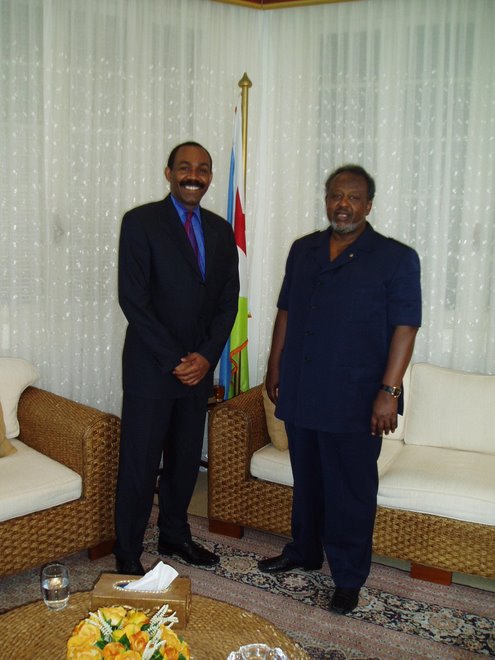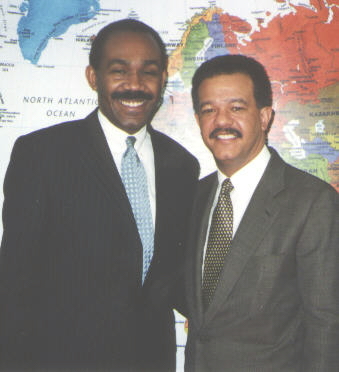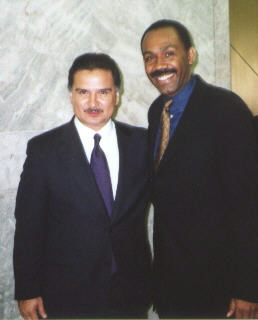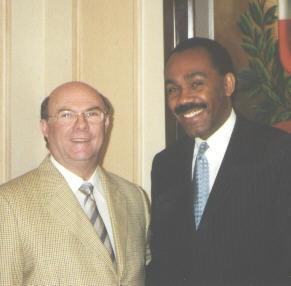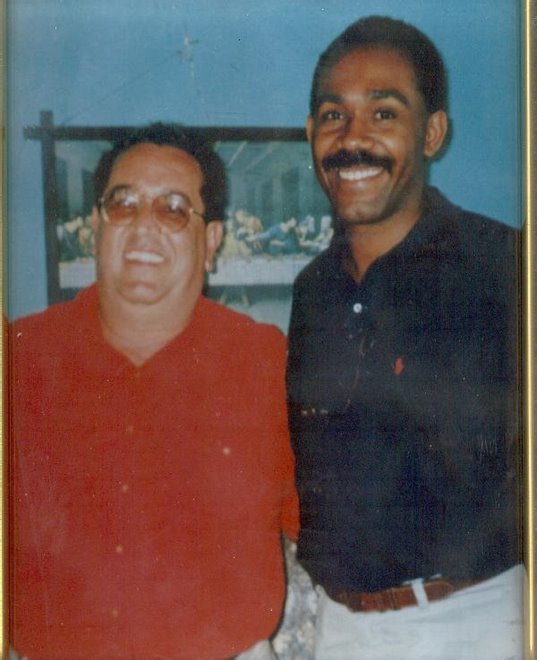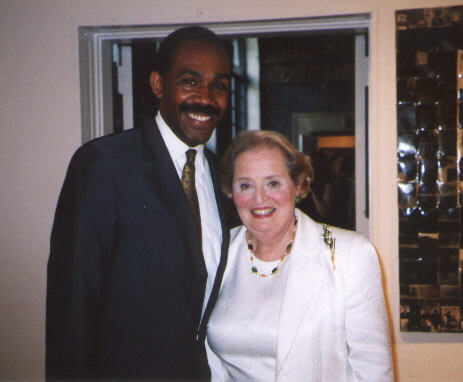Pran san’w li analiz sa, pou’w kapab komprann
defi kap tann nou tout nan 12 mwa kap vini yo la. Dimitri Vorbe te monte nan
emisyon Sa Kap Kwuit pou fè divèsyon ak nom mwen pou pèp la pa wè ki kantite
kob petrokaribe e lajan taks leta ki nan men li. Mwen te reponn li, klike la a
Devan volim manti kifèt mwen te mande jounalis
Garry Pierre Paul Charles yon deba sou Scoop FM pou tou moun kapab wè klè nan
dosye Petrokaribe a. Depi lè sa Dimitri Vorbe bay Garry gwo presyon pou dikte
koman deba sa dwe fèt. Finalman Garry Pierre Paul Charles anile deba sa nan sèvi
a ekzijans Dimitri Vorbe fè. Vorbe mande fòk mwen fisikman prezan. Demand
Dimitri a etranj ampil pou 2 rezon. Premye a se pa yon match bòks ou tenis kote
fòk jwè yo prezan. Se yon fas a fas radyo. Jodia nan mond lan 89% entèvenan yo nan
radyo e nan televizyon pa prezan nan stidyo. Depi w gade CNN wap wè sa. Dayè mwen
fè plizyè fas a fas konsa nan Scoop ; yon bò mwen fè deba pa telefonn ak Andre
Michel sou Scoop e yon lot bò ak Moise Jean Charles se te nan telefon tou. Dezyèm
rezon ki fè sa etranj se ensistans Dimitri pou mwen la fizikman. Li tèlman
ensiste ke li potre yon nèg kap pare anbiskad. Eske nou sonje jan nèg sa yo te
pare anbiskad e touye Robert Marcelo pou 80 milyon dola petrokaribe ? Pou
dekouvri kapasite violans mesye sa yo nan abiskad e touye moun klike la : https://www.facebook.com/StanleylucasHaiti/videos/1094695657233347/
Prekosyon pa kapon sitou lè w gade jan nèg
yo tire lidè RDNP a Eric Jean Baptiste maten an. Jodia 1 Oktob 2018 Dimitri
mawon deba sou kot kob petrokaribe sou Scoop FM. Mwen mande tout moun konstate
sa.
Dimitri Vorbe, ak tout klik ki nan ekip li a,
fonksyone menm jan ak yon mafia ki enfiltre nan yon seri de gran pwojè leta,
kote k genyen anpil milyon dola k ap brase. Kijan sa mache ? Ekip piyajè sa a,
mete moun pa yo nan gwo djòb leta, yo trafike de gwo kontra nan enterè poch yo,
de kontra ki « irevokab ». Lè yo kòmanse demaske yo, yo chanje non, yo chanje
po tankou zonyon. Lè ou demontre manigans yo, yo defann tèt yo ak plizyè taktik
: swa yo voye labou sou ou di se pwopagann w ap fè, swa yo chèche achte w, swa
yo chèche eliminen w, asasine w.
Pou analiz la kapab klè Stanley Lucas pa janm
jere ni lajan Petrokaribe ni lajan leta nan vi li. Noumenm, n ap goumen sou
dosye Petrokaribe depi anvan otorite Lespwa-Inite ki te kontrole leta te touye
Robert Marcelo pou 80 milyon dola ameriken Petrokaribe an 2009. Pou moun ki
bliye yo, gade :1. Klike la : http://solutionshaiti.blogspot.com/2009/01/haiti-bilan-2008-par-stanley-lucas.html
2. klike la : http://solutionshaiti.blogspot.com/2010/01/haiti-bilan-2009-une-decennie-ratee-par.html
Taktik
zonyon : magouyè chanje po chak fwa yo dekouvri yo
Nan jwèt politik malouk e brital pou piye pèp
la, reyaksyonè ki mèt k ap kontrole jwèt politik la koken mastèbrenn ampil. Yo
kache dèyè e sèvi ak kèk nèg klas mwayènn e katye popilè pou bay peyi a ak pèp
la ampil move kou. Y ap fè sa depi lontan e se move kou sa yo ki detrui peyi
dayiti. Chak fwa pèp la dekouvri yo, yo chanje nom. Yo te komanse ak lavalas,
lè pèp la dekouvri granmanjè, dwog dilè, kidnapè e asasen yo, yo chanje nom yo
tounen Lespwa, klike la
: http://solutionshaiti.blogspot.com/2009/01/le-parti-fanmi-lavalas-vit-du-crime.html
Lè pèp la dekouvri magouyè ak granmanjè Lespwa
yo chanje nom an anko e pran nom Inite, klike la : http://solutionshaiti.blogspot.com/2010/01/haiti-bilan-2009-une-decennie-ratee-par.html Pi devan lè pèp la dekouvri vakabondaj Inite
nan jere leta, yo chanje nom e yo kreye Verite. Anvan yo chanje Inite pou Verite
te genyen gen yon ti konfizyon ak LAPEH, kote epòk senatè Anacasis te deside
kanpe lwen bizango sa yo. Pèp la ki te vin komprann jwèt mètdam chanje non sa
bayo kanè ak bon kout bwa nan eleksyon 2011. Jodia anko yo vle chanje nom ankò.
Fwa sa a, koken yo pran poz yo vle goumen pou lajenès ak yon nouvo nom Ayiti
Nou Vle A. Nan strateji mètdam nan zonyon anpil po ke yo pare a, yo di tou
sistèm nan pa bon, san yo pa menm gade responsabilite yo nan kraze peyi e
detrui a. Malgre jwèt koken e mètdam sa a ki rekomanse, pèp la pare pou yo.
Pou
konbat mastèbrenn, fòk nou byen enfòme
Genyen yon bagay ki pa janm chanje nan
strateji sa. Se toujou ti reyaksyonè piyajè Potoprens, ki toujou kache dèyè
mouvman politik sa yo, pou yo piye leta san yo pa gen okenn fonksyon ofisyèl.
Nan piye leta yo lage ti myèt pen bay militan ke yo fè chèf. Ti reyaksyonè
piyajè sa yo ki nan Gwoup Blakawout, Gwoup de Boudon se yo ki finanse lavalas,
Lespwa, Inite, Verite e Ayiti Nou Vle A. Yo pran kèk malere ki se ti esklav yo
genyen nan klass mwayènn e katye popilè ke yo mete minis, senatè, depite
elatrye. Apre sa fèt, otorite ke reyaksyonèyo enstale nan gwo djòb leta mete
nan leta siyen avnan ak kontra irevokab pou Gwoup Blakawout ak Gwoup de Boudon.
Yo fè yo kado byen leta pou degouden tankou minotri dayiti, Varreux elatrye. Yo
ba yo aksè a lajan leta nan bank santral, ONA, BNC elatrye. Yo ba yo franchiz,
louvri ladwann ak frontyè a pou yo, san yo pa peye taks ak tout kalite lòt
kontra ki pèmèt souse leta a travè nan mètdam sifaktirasyon. Mwen pap pale de
koze franchiz la. Strateji sa a raple nou sa yo te rele “Politique de doublure”
nan istwa dayiti, nan diznevyèm syèk. Jodi a tout jènn ki vle goumen kont
koripsyon nan zafè kòb taks leta ak kòb Petrokaribe ke yo volè, dwe komprann
strateji sa a e metrize dosye sa yo. Si se pa sa ou pral nan vyolans, lajistis
p ap jije pèsonn e lajan ke nèg yo vòlè a ap rete nan poch yo pandan y ap
krisifye kèk moun kom bouk emisè. Si ou pa idantifye oligak gwoup de boudon e
gwoup blakawout yo, fonksyonman yo andedan leta a e si ou pa devlope yon
strateji entelijan pou goumen kont reyaksyonè sa yo kap piye leta, ou fèk
kòmanse vire anwon won e bwè mizè.
Kòm « Santinèl Pèp la », depi lontan nou pa
janm fè bak devan entimidasyon nèg gwoup blakawout, nèg gwoup de boudon,
anakopopilis ki se esklav k ap travay ak yo pou ede yo piye leta. Semènn sa
ekip Gwoup Blakawout – Inite, Lespwa, Verite menase nou nan radyo kòmsi yo ta
renmen touye nou menmjan yo te touye Robert Marcelo, yon fason pou nou sispann
pale. Si ou bliye kòman nèg yo te touye Robert Marcelo e menase pitit fi li ki
t ap mande jistis pou papa li apre ke li mouri gade 2 atik sa yo :
1. klike la : http://www.haitian-truth.org/ou-est-passe-joseph-robert-francois-marcello-par-pierre-raymond-dumas/
2.
klike la : https://lenouvelliste.com/lenouvelliste/article/82527/Menacee-la-fille-de-Marcello-laisse-le-pays
Men
dosye ki cho pou Dimitri Vorbe
Noumenm nou pa nan griyen dan ak nèg e fanm ki
enplike nan koripsyon nan kelkeswa kan politik ke yo ye, sa vle di tèt kale
tou. Sèl patron nou se konsyans nou paske tout moun konnen nou pa achtab, nan
lit sa depi 20 an, se peyi nou ki nan kè nou nap defann. Yo eseye touye nou
plizyè fwa, sa pa mache. Yo esaye eseye ofri nou gwo lajan ak gwo avantaj, sa
pa mache nonplis. M ap prezante nou 5 dosye cho, ke Dimitri Vorbe pa vle
diskisyon fèt sou yo nan radyo. Depi yon jounalis, yon militan kòmanse manyen e
analize dosye sa yo toutbon, li envite’w vinn vizite SOGENER ki konstrui ak
lajan leta, nan lide ke li pa chich e li pral sèvi avèk ou. Gen jounalis ki
mache nan lojik dafè sa e gen jounalis ki gen karaktè ki pa mache nan koripsyon
sa a. Men 5 dosye ke li pa vle sosyete a diskite :
1. Dosye
Blakawout la : Gen 15 zan desa kèk nèg nan Inite,
Lespwa e Verite kite nan pouvwa a deside ke yap monte yon rakèt pou piye leta e
kenbe pouvwa a pandan lontan. Yo te vle konstrui yon pati inik menm jan sa te
ekziste nan peyi Meksik ak yon pati ki rele PRI ki te kontrole leta pandan 55
an. Pou pran eletrisite a nan men leta, premye bagay yo pral fè, yo pral voye
boule pasyèlman izinnn elektrisite leta Varreux ki te fèk repare ak lajan leta.
Jodi a, si gen ankèt ki fèt, y ap jwenn ki moun ki te fè boule Varreux. Epòk
kriminèl sa yo pral boule Varreux, yo mete 2 lòt dife nan Potoprens kòm pou fè
divèsyon. Pou verifye, gade repòtaj sa a radyo Kiskeya te reyalize sou sa,
klike la : http://www.radiokiskeya.com/spip.php?article3958
Apre yo pasyèlman boule Varreux, yo remèt li
bay zanmi yo nan Gwoup Blakawout. Anvan leta remèt antrepriz piblik bay sektè
prive, Komisyon Modènizasyon Antrepriz Piblik genyen pou fè evalyasyon e
rekomandasyon bay Konsèy dè Minis. Pou komprann gade jan satefèt pou teleko e
cina. Sa pa janm fèt nan ka izinn eletrisite leta Varreux. Kijan fè Varreux yon
antrepriz leta tounen Sogener jodia yon antrepriz prive ? Otorite leta yo
dwe reponn pèp la kesyon sa.
Pou ranfòse monopòl ke yo pral kreye pou Gwoup
Blakawout e kraze EDH, yo bay Gwoup Blakawout 40 milyon dola ameriken leta nan
bank BNC pou achte dèlko. Apre sa toujou ak konplisite kèk otorite Lespwa,
Inite e Verite ki te kontrole leta, yo ekri yon kontra vann leta eletrisite
irevokab bay Gwoup Blakawout ke okenn Prezidan e okenn Premye Minis pa ka
revoke yon fason pou lajan leta kontinye rantre nan pòch yo. Kontra irevokab sa
a ba yo tou tout kalite franchiz pou tout sa yo enpòte, sa vle di yo pa bezwen
peye ladwann.
Sa pat rete la, kèk otorite Inite, Lespwa,
Verite ki te kontrole leta bay nèg Gwoup Blakawout yo yon lèt garanti ki pèmèt
yo chak mwa al pran ant 10 e 20 milyon dola ameriken pa mwa san otorizasyon
ministè finans. Gen de moun ki di sa fèt pandan 15 zan gen de moun ki di pandan
10 zan nèg yo rantre chak mwa labank al pran 20 milyon dola ameriken. Sa vle di
chak ane Gwoup Blakawout pran nan bank santral ant 120 e 240 milyon dola
ameriken. An 10 zan nèg Gwoup Blakawout yo resevwa ant 1 milya 200 milyon e 2 milya
400 milyon dola ameriken lajan leta, lajan pèp la nan eletrisite sèlman aloske
tout moun rekonèt se blakawout yo t ap vann leta. Wa fè kalkil la pou 15 zan.
Jodi a kòm Gwoup Blakawout di yo pa chich y ap esaye envite e achte jounalis
pou koze sa yo pa pale e pa diskite sou radyo e nan laprès dapre twit sa ki
soti sou kont Dimitri Vorbe. Y ap entimide, atake sitwayen ki pa pran nan
kaponnay e ke yo pa kapab achte konsyans yo. Pèp la pa egare ! Nan ki peyi
responsab leta bay kontra irevokab ak franchiz nan kondisyon sa yo? Okenn ! Nan
ki peyi yo kite reyaksyonè ap foure men nan lajan leta konsa chak mwa epi se
blakawout pèp la jwenn ? Nan ki peyi yo bay ti reyaksyonè lèt garanti pou al
touche tout lajan sa yo labank menm lè amplwaye leta pa ka touche ? Okenn !
2. Dosye
Wout : Kèk otorite Inite, Lespwa e Verite ki te kontrole leta bay Vorbe et
Fils a travè ministè travo piblik yon pakèt kontra pou konstrui wout sou 10 zan
nan tout peyi a. Tout moun dekouvri jodi a ke Vorbe & Fils fè leta peye 1
milyon 600 mil dola ameriken pou chak kilomèt wout alòske vrè pri pou menm
kalite kilomèt wout koute 100 mil dola ameriken pa kilomèt. Eske sa vle di
pandan 10 zan nan sifaktirasyon sou chak kilomèt wout, yo vòlè 1 milyon 500 mil
dola ameriken ? Mande travo piblik bay konbyen kilomèt yo te ba yo fè depi 10
zan wa fè kalkil la. Lè nou poze pwoblèm sifaktirasyon sa a, Vorbe t al monte
sou Scoop FM pou pase leta ak Prezidan Jovenel nan bètiz. Li tèlman abitye ak
otorite leta ki se esklav mantal ti gwoup reyaksyonè sa yo, misye panse ke li
se leta andedan leta. Kòm Santinèl Pèp la ki gen karaktè, n ap toujou goumen
pou defann enterè pèp la.
3. Dosye
Asfalt : Èske se vre otorite lespwa, Inite ki te kontrole leta nan konfyolo
ak nèg blakawout yo pou sabote e bloke 4 izinn asfalt ke leta genyen pou yo te
ka piye leta nan zafè wout e fòse leta enpòte asfalt ke yo fè peye 4 fwa pi chè
? Eske se vre Venezuela te bay asfalt tou ki tal nan men Gwoup Blakawout ? Èske
se vre asfalt sa a tal vann Sendomeng. Se diskisyon sou radyo, ankèt ki dwe
bannou repons sa yo ke n ap chache pou nou jwen kot kob Petrokaribe a. Dimitri
pa vle fè deba sou radyo ak sitwayen ki kapab. Anmenm tou lè li ale nan sena a,
se teyat li oganize ak senatè ke li konsidere kòm amplwaye l. Ekip sa a sa pa
vle ankèt sou dosye sa yo abouti e se pousa y ap distribye lajan nan katye
popilè yo e yo nan mache prese pou mete vyolans.
4. Gaz
Petrokaribe nan BMPAD : Preval ak kèk otorite lespwa,
Inite e Verite ki te kontrole leta bay gwoup blakawout 250 milyon dola gaz
Petrokaribe pou yo mete nan dèlko ke leta te achte pou yo. Jodi a gen moun ki
di ke yo vann gaz sa e yo pa janm peye BMPAD. Èske se vre ? Nan interview,
Dimitri di se fòse yo fòse l pran gaz la. Tout moun mande èske misye ap pase
moun nan bètiz ? Pou gade interview sa klike la: https://www.facebook.com/StanleylucasHaiti/videos/321497791745920/
5. Rapo
Sifaksirasyon :
Nan tout tranzaksyon sa yo, amplis de lòt lajan ke yo fè mal, dapre rapò
leta sanble toujou gen sifaktirasyon Gwoup Blakawout toupatou, nan eletrisite,
nan asfalt, nan fè wout elatrye. Men yon ekzamp klike la a : https://www.slideshare.net/Stanleylucas/rapport-de-la-commission-nationale-de-reforme-du-secteur-energie-en-haiti Èske lakou siperyè dè kont ap kapab ankete
seryezman sou dosye sa yo ?
Sou 15 zan Dimitri Vorbe genyen nan men li
apeprè ant 2 milya 400 milyon dola ameriken leta e 3 milya ki se lajan taks pèp
la e kòb petrokaribe ke li ranmasse nan zafè wout e nan blakawout. Nou dekouvri
istwa sa a kòmanse ak politisyen Lespwa, Inite e Preval ki te kontrole leta e
ki te nan men Vorbe. Yo menm di ke nèg sa yo te tèlman chèf sou
Lavalas-Lespwa-Inite ke pandan yo pa t gen pozisyon ofisyèl nan leta, yo te
menm patisipe nan dikisyon-negosyasyon ak Venezuela lè bagay petrokaribe yo
tapral kòmanse e se te yon fason pou yo ranje kabann yo byen pou rakèt sa. Èske
se vre ?
Sou dosye koripsyon sa yo, si Prezidan Jovenel
pa aji pa rapò a ti reyaksyonè sa yo ki piblikman ap pase l nan bètiz, sabote
politik li, l ap pran yon koudeta nan men yo.
Chak fwa moun serye kòmanse diskite koze sa yo
pou fè pèp la komprann piyaj sa, ti reyaksyonè yo toujou fè 4 bagay pou atake e
sabote sitwayen ki vle goumen kont koripsyon sa:
1. Yo di se propagann w ap fè alòske se
reyalite w ap diskite
2. Yo di w ap defann yon patron alòske ou pa
gen patron, se peyi ak pèp w ap defann
3. Yo peye jounalis nan radyo pou ampeche’w
pale paske yo pa chich
4. Yo eseye entimide’w plizyè jan, si sa
nesesè y ap touye’w menmjan ak Marcelo. Pou gade pratik vyolans mesye sa yo sou
jènn kip a dako klike la : https://www.facebook.com/StanleylucasHaiti/videos/1094695657233347/
Jodi a peyi a, pèp la ap mande kou siperyè dè
kont prepare dosye teknik sa yo san politik pa ladanl. Kesyon k ap poze, èske
kou siperyè dè kont ap ka jwenn sipò gwo kompayi odit tankou KPMG, Deloitte
elatrye pou fè travay sa? Yo poze kesyon tou tankou, èske vòlè ki piye leta yo
ap ka achte moun k ap travay nan kou siperyè dè kont ? Se gwo defi sa yo k ap
tann peyi nan 12 mwa k ap vini la a. Lòt defi a, èske pou gate jwèt la e
anpeche ankèt e pwosè fèt, èske volè yo ap reyisi kreye e simen vyolans anvan
ankèt la finalize, nan objektif pou yo mete yon gouvènman provizwa tankou pa
gouvènman Privert a, kapral defann monopòl ak avantaj pa yo. Jou 17 Oktob nou
dwe levekanpe pasifikman kont koripsyon sa a e ba yo prèv de nivo matirite
politik nou! Wi a mobilizasyon pasifik pou fòse kou siperyè dè kont reyalize e
pibliye yon bon ankèt ! Non a vyolans pou fè koudeta, bloke ankèt petrokaribe e
mete gouvènman provizwa ! Pandan n ap mobilize kont koripsyon, nou dwe kòmanse
idantifye moun serye kapral kòm kandida pou depite e senatè nan pwochenn
eleksyon yo, an Novanm 2019.



































































































































-3.jpg)


.jpg)





.jpg)











.jpg)
.jpg)
.jpg)
.jpg)
.jpg)
.jpg)


















